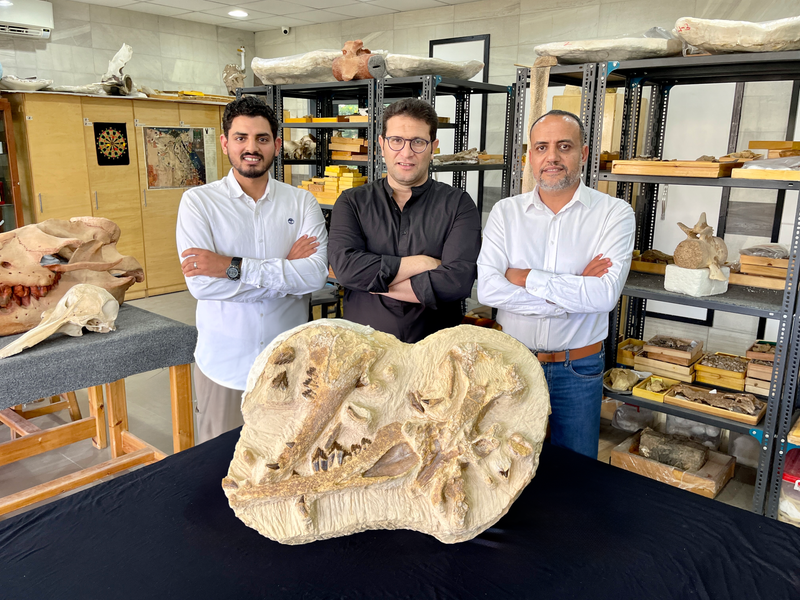Just a week after a team of researchers announced the discovery of one of the heaviest animals to grace the face of Earth, a separate team of researchers has announced the discovery of one of the smallest extinct whales.
The species is named Tutcetus rayanensis, and it lived in Egypt during the Eocene period, about 41 million years ago. At an estimated 8 feet and 2 inches long (2.5 metres) and weighing in at just 412 pounds (187 kilograms), the whale—yes, named for the pharaoh Tutankhamun—is considered the smallest known basilosaurid, an extinct family of fully aquatic whales. The team’s research describing the species was published today in Communications Biology.
“Tutcetus rayanensis stands out within the basilosaurid group due to its impressively small size,” said study co-author Hesham Sallam, a paleontologist at Mansoura University and the American University in Cairo, in an email to Gizmodo. “Its diminutive stature in the context of the basilosaurid family provides a unique perspective on the diversity within this group, revealing that early whales exhibited a range of body sizes to adapt to their evolving marine environments.”
The fossilized remains of the whale were found in Egypt’s Fayum Depression in 2012. (The new species’ second name comes from the Wadi El-Rayan Protected Area, where the holotype specimen was found.) The Fayum Depression is a rich fossil bed for ancient whales; in 2021, a team including Sallam discovered the four-legged whale P. anubis, also dating to the Eocene, in the region.
“The Eocene fossil sites of Egypt’s Western Desert have long been the world’s most important for understanding the early evolution of whales and their transition to a fully aquatic existence,” said study co-author Erik Seiffert, a paleontologist at the University of Southern California, in a press release accompanying the discovery.

T. rayanensis’ discovery is easily juxtaposed with last week’s discovery of Perucetus colossus, a massive basilosaurid that weighed anywhere between 93.7 and 374.8 tons (85 and 340 metric tons), based on measurements of the creature’s size and bone density.
“The discovery [of T. rayanensis] is important, not only because it is one of the earliest records of the family, but also because it confirms that the latter was much more diverse than previously assumed,” said Eli Amson, a paleontologist at the State Museum of Natural History Stuttgart and a member of the team that discovered P. colossus, in an email to Gizmodo.
Amson’s team concluded that P. colossus likely lived in shallow coastal waters in what is now Peru (around the same time that T. rayanensis was traversing through what is now Egypt). Based on the animal’s tremendous weight, they think it moved slowly through the water, and was more likely scavenging for food than chasing down prey.
“The disparity of body size—and consequently of lifestyle—is rather impressive for this early phase of cetacean evolution—I guess many of the readers will remember the very different whale published last week,” Amson added.
Both the massive and diminutive whale species still touted vestigial hindlimbs, a relic of their semiaquatic and terrestrial forbears. In summary, it’s been quite a week for whales: two basilosaurs on opposite ends of the creatures’ mass ranges have been found within days of one another.
“In conjunction with the discovery of the Perucetus colossus, which stands in stark contrast as a massive basilosaurid, these findings together exemplify the remarkable diversity that characterized the Eocene marine ecosystems,” Sallam said.
Further investigation of T. rayanensis may clarify the niche the petite basilosaurid had in its Egyptian Eocene context: how it swam, what it ate…more generally, how it lived. It’s almost certain its bones will tell quite a different story than its massive, dense cousin across the Atlantic.
